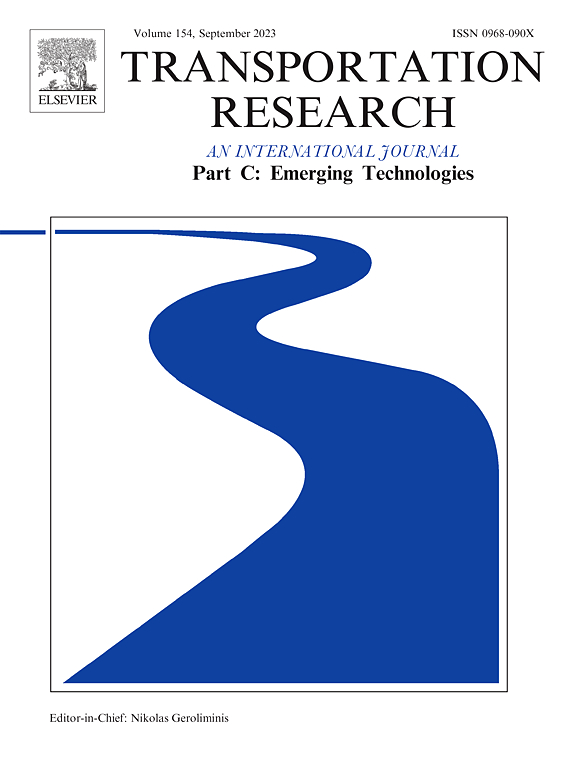Scaling laws of dynamic high-capacity ride-sharing
IF 7.6
1区 工程技术
Q1 TRANSPORTATION SCIENCE & TECHNOLOGY
Transportation Research Part C-Emerging Technologies
Pub Date : 2025-03-17
DOI:10.1016/j.trc.2025.105064
引用次数: 0
Abstract
This study discovers a few scaling laws that can effectively capture the key performance of dynamic high-capacity ride-sharing through extensive experiments based on real-world mobility data from ten cities. These scaling laws are concise and contain only one dimensionless variable named system load that reflects the relative magnitude of demand versus supply. The scaling laws can accurately measure how key performance metrics such as passenger service rate and vehicle occupancy rate change with the system load. The scaling laws strongly agree with experimental results, with the values of exceeding 0.95 across all scenarios. In addition, the scaling laws can accurately reproduce experimental results of dynamic high-capacity ride-sharing involving different road networks, supply–demand patterns, vehicle capacities, and matching algorithms, indicating these scaling laws could be general and applied to other cities. These scaling laws provide a reference for transportation network companies and governments to efficiently manage dynamic ride-sharing services. For example, according to these scaling laws, when the demand is relatively high, e.g., system load equals 3, ride-sharing services with a capacity of 2 passengers can only accommodate 50% of demand. In comparison, high-capacity ride-sharing services with a capacity of 4 passengers can satisfy 72% of demand. The findings provide valuable insights into the expected performance of ride-sharing, informing decisions about how to operate a fleet to improve transportation efficiency.
求助全文
约1分钟内获得全文
求助全文
来源期刊
CiteScore
15.80
自引率
12.00%
发文量
332
审稿时长
64 days
期刊介绍:
Transportation Research: Part C (TR_C) is dedicated to showcasing high-quality, scholarly research that delves into the development, applications, and implications of transportation systems and emerging technologies. Our focus lies not solely on individual technologies, but rather on their broader implications for the planning, design, operation, control, maintenance, and rehabilitation of transportation systems, services, and components. In essence, the intellectual core of the journal revolves around the transportation aspect rather than the technology itself. We actively encourage the integration of quantitative methods from diverse fields such as operations research, control systems, complex networks, computer science, and artificial intelligence. Join us in exploring the intersection of transportation systems and emerging technologies to drive innovation and progress in the field.

 求助内容:
求助内容: 应助结果提醒方式:
应助结果提醒方式:


